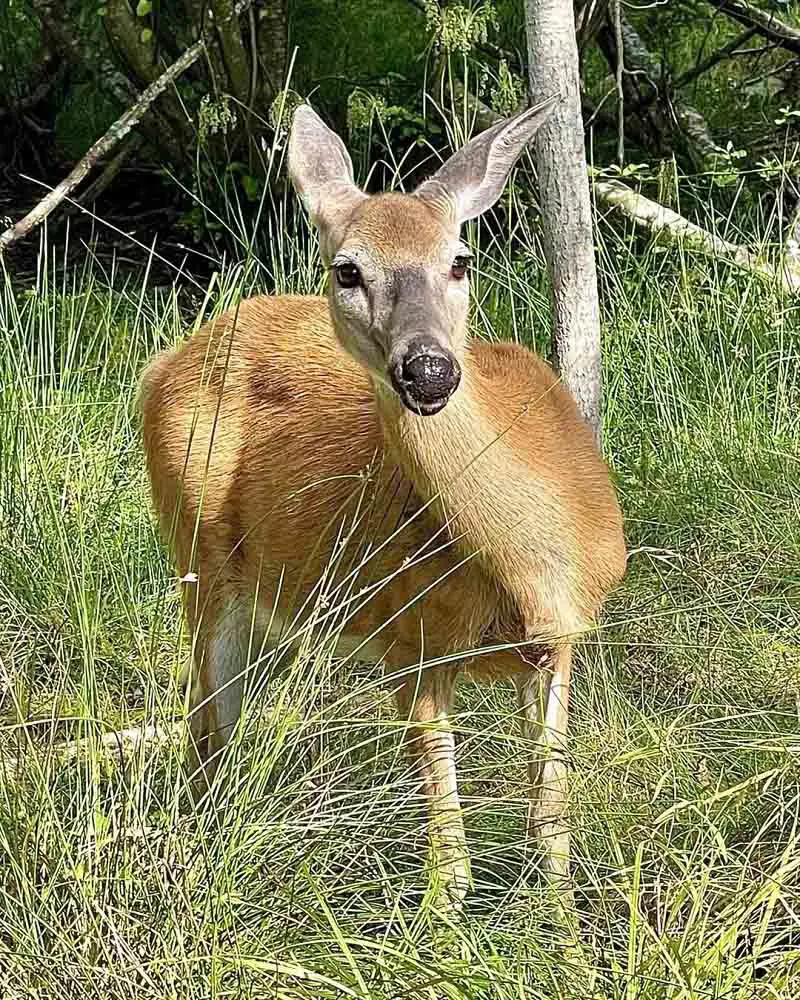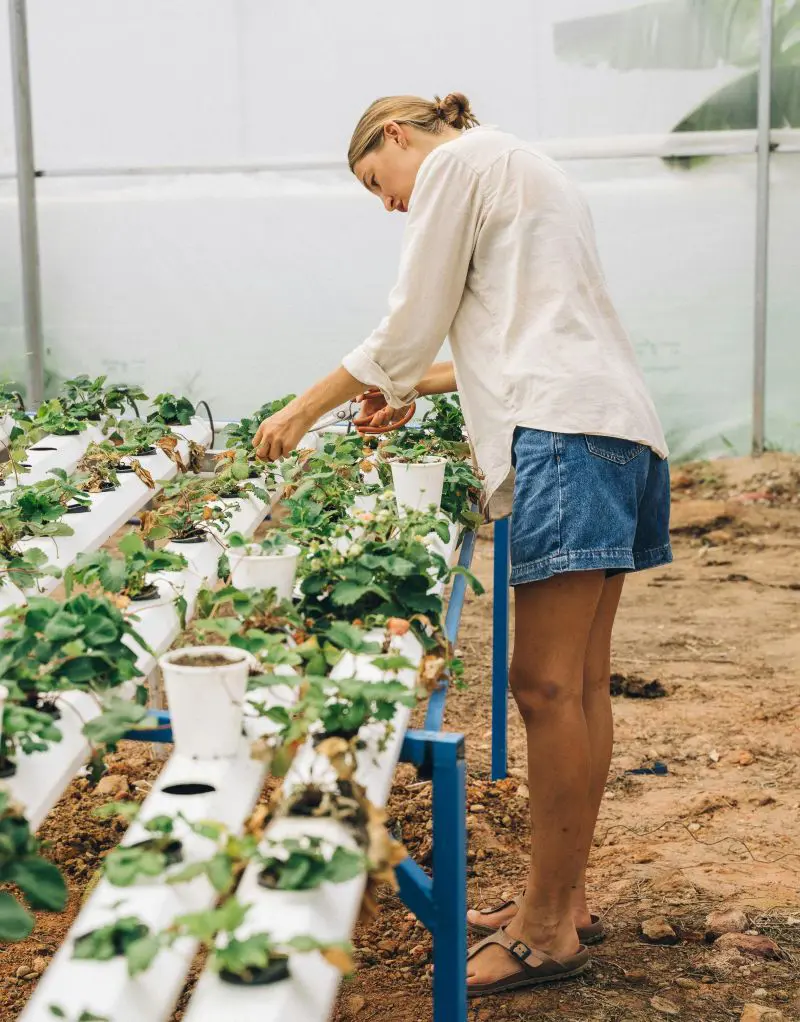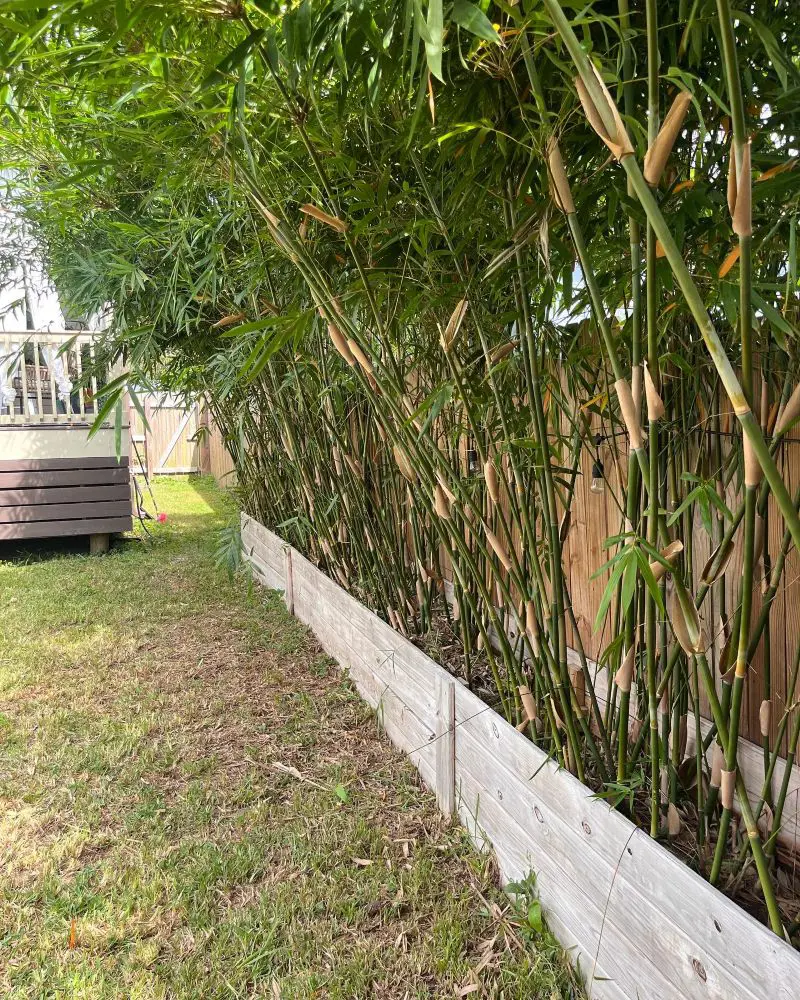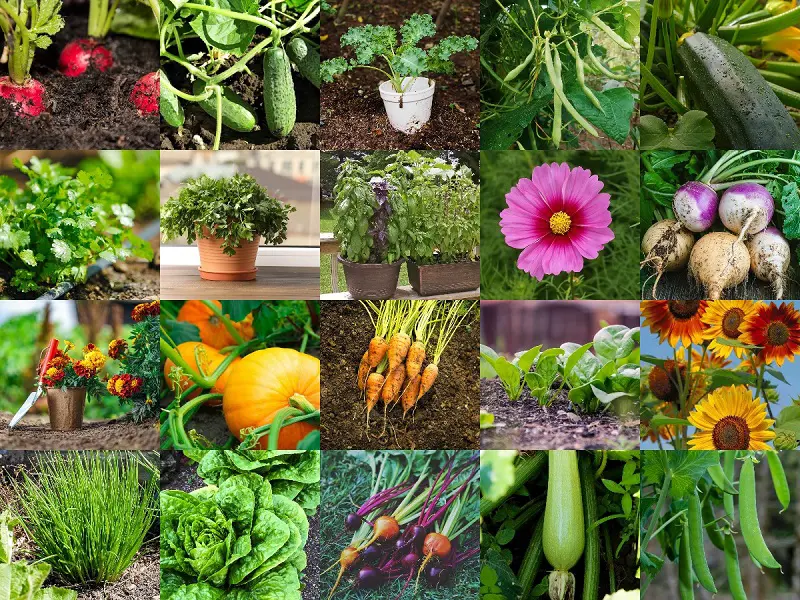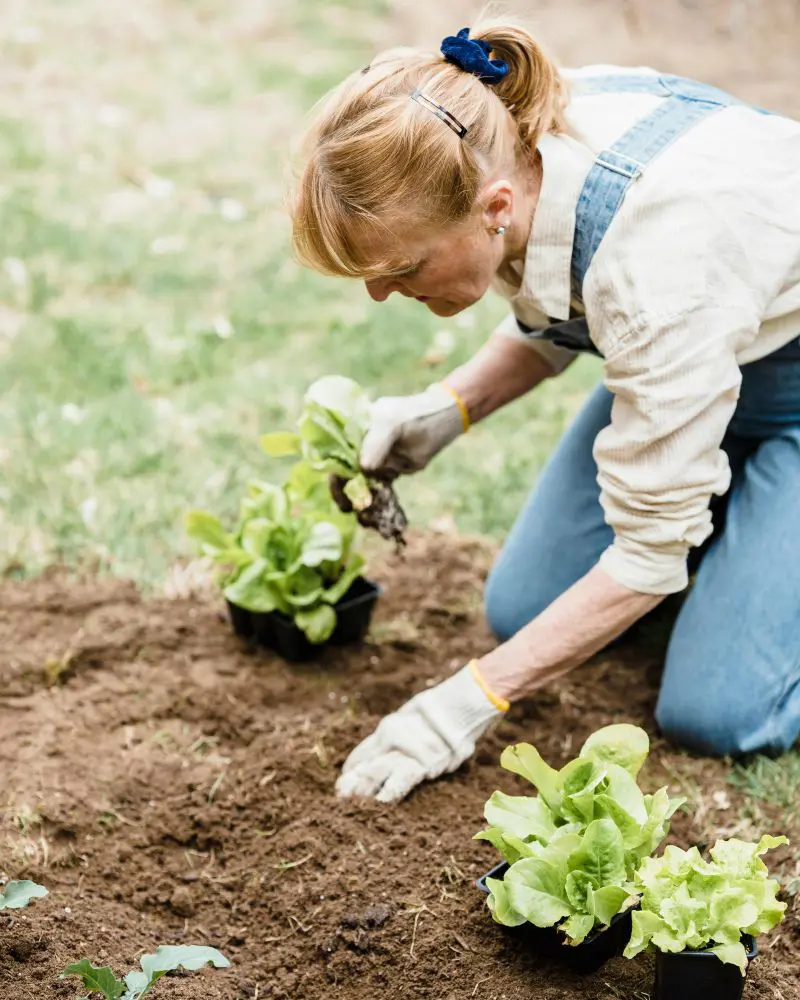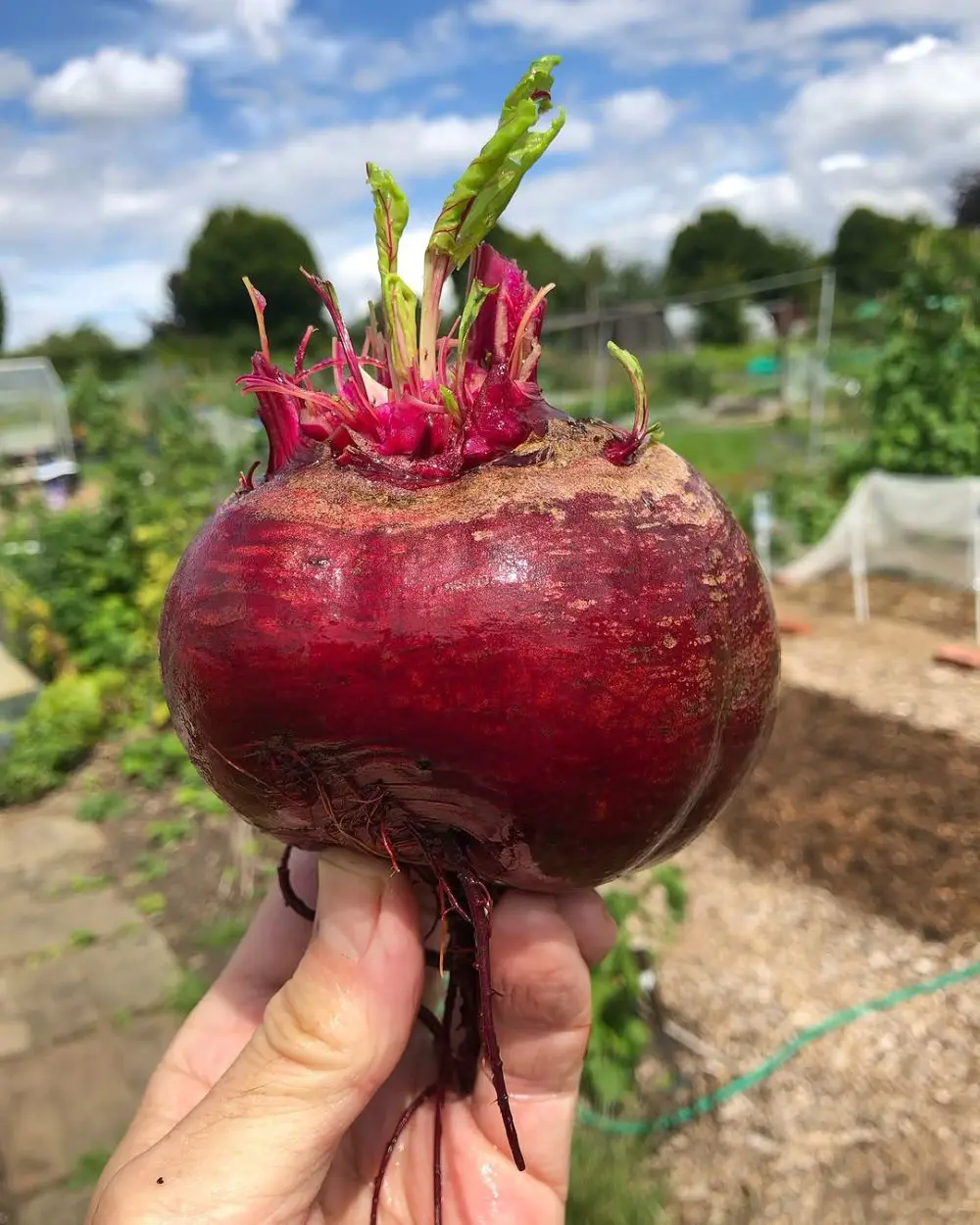Ornamental trees can transform any garden into a picturesque landscape, providing beauty, shade, and even wildlife habitats. They come in various sizes, shapes, and colors, offering something for every gardener's taste.
This article highlights 20 exquisite ornamental trees that can enhance the aesthetics and functionality of your garden.
1. Japanese Maple
The Japanese Maple is a prized ornamental tree known for its stunning, delicate foliage that ranges in color from vibrant reds and oranges to deep purples. This small to medium-sized tree adds elegance to any garden with its graceful, lacy leaves and striking autumn hues.
Ideal for partial shade to full sun, Japanese Maple grows in well-drained, slightly acidic soil and requires regular watering, especially during dry periods. Its versatile beauty and manageable size make it a favorite among gardeners seeking to create a tranquil, picturesque landscape.
Growing Conditions:
- Sunlight: Partial shade to full sun
- Soil: Well-drained, slightly acidic soil
- Water: Regular watering, especially in dry periods
2. Flowering Dogwood
The Flowering Dogwood is a beloved ornamental tree in the USA, admired for its stunning spring blossoms and vibrant fall foliage. Typically reaching 20-30 feet in height, this deciduous tree showcases a profusion of white, pink, or red bracts surrounding small, inconspicuous flowers.
Its graceful, spreading branches create an elegant silhouette. In autumn, the leaves turn brilliant red or purple, while bright red berries attract wildlife. Flowering Dogwood thrives in well-drained, acidic soil and partial shade, making it a popular choice for gardens and landscapes, offering year-round beauty and ecological benefits.
Growing Conditions:
- Sunlight: Partial shade to full sun
- Soil: Moist, well-drained soil
- Water: Regular watering
3. Eastern Redbud
The Eastern Redbud is a striking ornamental tree known for its vibrant spring display of rosy-pink flowers that emerge directly on its branches and trunk. Native to North America, this deciduous tree typically grows 20-30 feet tall with a spreading, rounded crown.
Its heart-shaped leaves provide a lush, green canopy in summer, turning yellow in fall. Tolerant of various soil types and thriving in full sun to partial shade, the Eastern Redbud is a favorite in gardens and landscapes. It attracts pollinators and adds year-round interest with its unique form and seasonal color changes.
Growing Conditions:
- Sunlight: Full sun to partial shade
- Soil: Well-drained soil
- Water: Moderate watering
4. Crape Myrtle
Crape Myrtle is a popular ornamental tree admired for its long-lasting summer blooms. Its color ranges from white and pink to red and purple. This deciduous tree, native to Asia, typically grows 15-25 feet tall with a multi-trunked, vase-shaped form.
Its attractive, peeling bark and vibrant fall foliage add year-round appeal. Crape Myrtle thrives in full sun and well-drained soil, making it a resilient choice for diverse landscapes. It's drought-tolerant and resistant to many pests and diseases.
Frequently used in gardens, parks, and along streets, Crape Myrtle provides striking color and texture, enhancing outdoor spaces beautifully.
Growing Conditions:
- Sunlight: Full sun
- Soil: Well-drained soil
- Water: Drought-tolerant once established
5. Magnolia
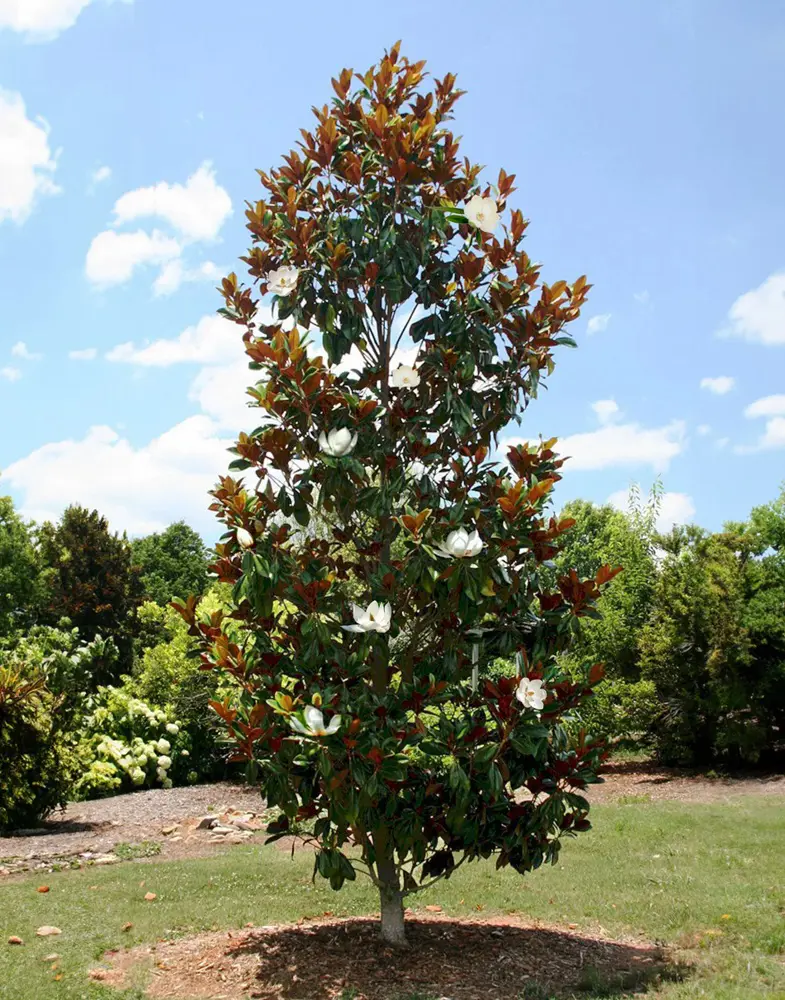
Magnolias are iconic ornamental trees prized for their large, fragrant flowers and glossy, evergreen, or deciduous leaves. They vary in size from small shrubs to towering trees. Their stunning blooms, in shades of white, pink, purple, and yellow, appear in spring, often before the leaves emerge, creating a spectacular display.
Magnolias prefer well-drained, slightly acidic soil and thrive in full sun to partial shade. With their distinctive, cup-shaped flowers and robust form, Magnolias are a favorite in gardens and landscapes, offering year-round beauty and a touch of elegance to any setting.
Growing Conditions:
- Sunlight: Full sun to partial shade
- Soil: Rich, well-drained soil
- Water: Regular watering
6. Weeping Cherry
The Weeping Cherry is a captivating ornamental tree cherished for its graceful, cascading branches adorned with delicate pink or white blossoms in early spring. Originating from Japan, this deciduous tree typically reaches 15-25 feet in height with a weeping, umbrella-like form.
Its slender branches sway elegantly in the breeze, creating a serene atmosphere. Weeping Cherry thrives in well-drained soil and full sun, showcasing vibrant green leaves that turn golden in fall.
Known for its resilience and low maintenance, it's a beloved choice for gardens, parks, and landscapes, adding a touch of beauty and tranquility to any environment.
Growing Conditions:
- Sunlight: Full sun
- Soil: Well-drained soil
- Water: Regular watering
7. Ornamental Pear
The Ornamental Pear is a popular choice in landscaping for its attractive spring blooms and vibrant fall foliage. It typically grows 30-50 feet tall with a symmetrical, pyramid-like shape.
In early spring, it bursts into profuse clusters of white flowers, creating a stunning display. Its glossy, green leaves turn shades of red, orange, or purple in autumn, adding to its seasonal allure.
Ornamental Pears thrive in well-drained soil and full sun, adapting well to various climates. With its resilience to urban conditions and ornamental appeal, it's favored for parks, streetscapes, and residential gardens alike.
Growing Conditions:
- Sunlight: Full sun
- Soil: Well-drained soil
- Water: Drought-tolerant once established
8. Japanese Cherry
Japanese Cherry is commonly known as Sakura. It is celebrated for its breathtaking springtime display of pink or white blossoms. This ornamental tree symbolizes beauty, renewal, and the fleeting nature of life in Japanese culture.
Admired worldwide for its elegance, the Japanese Cherry thrives in full sun and well-drained soil. It requires regular watering to flourish and showcases its graceful form and stunning flowers in gardens, parks, and landscapes.
Beyond its aesthetic appeal, the tree's cultural significance and seasonal spectacle make it a cherished addition to any outdoor space, captivating admirers with its brief yet enchanting bloom.
Growing Conditions:
- Sunlight: Full sun
- Soil: Well-drained soil
- Water: Regular watering
9. Serviceberry
Serviceberry is a versatile tree prized for its multi-season interest and ornamental value in gardens. Also known as Juneberry or Shadbush, it features delicate, white spring flowers that give way to edible berries loved by birds and humans alike.
In fall, its foliage turns brilliant shades of yellow, orange, and red, adding vibrant color to the landscape. Serviceberries thrive in full sun to partial shade and prefer moist, well-drained soil. These trees are valued not only for their beauty but also for their ability to attract wildlife and provide seasonal interest throughout the year.
Growing Conditions:
- Sunlight: Full sun to partial shade
- Soil: Moist, well-drained soil
- Water: Moderate watering
10. Golden Chain Tree
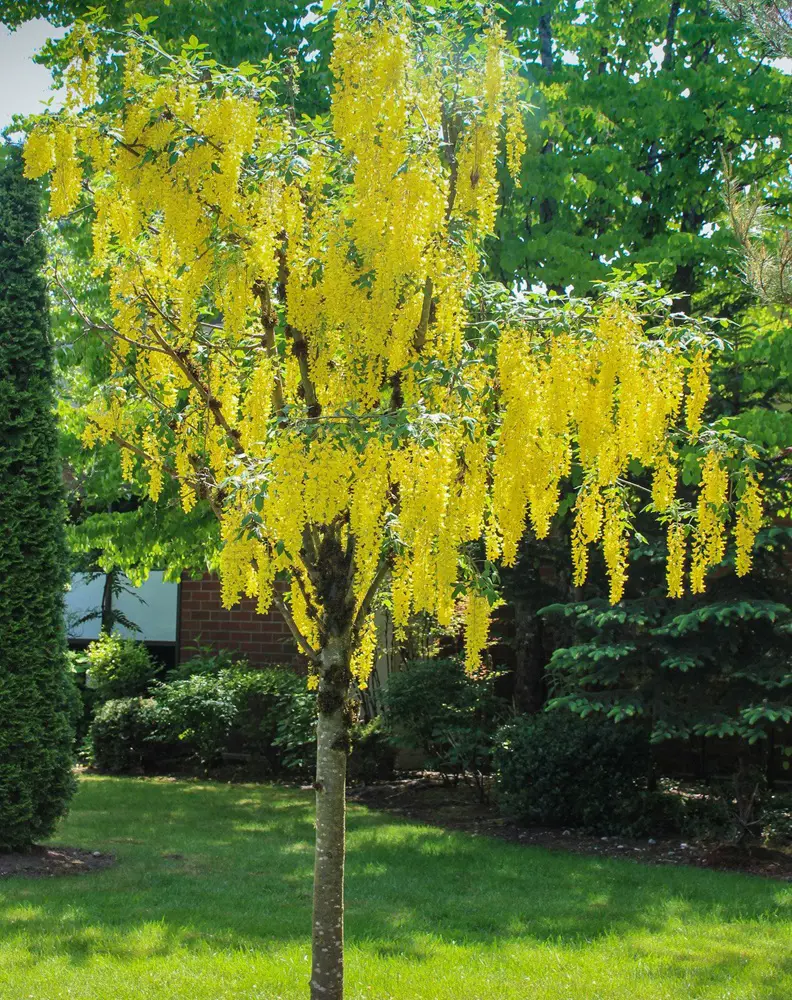
The Golden Chain Tree is known for its cascading clusters of bright yellow flowers that hang like golden chains in late spring to early summer. This tree adds a splash of vibrant color to gardens and landscapes.
It features compound leaves and smooth green bark, complementing its stunning floral display. Golden Chain Trees thrive in full sun to partial shade and well-drained soil.
While admired for its beauty, it's important to note that all parts of the tree, especially the seeds, are toxic if ingested, making it suitable for gardens where safety precautions can be maintained.
Growing Conditions:
- Sunlight: Full sun to partial shade
- Soil: Well-drained soil
- Water: Regular watering
11. Red Maple
Red Maple is a versatile and attractive deciduous tree native to North America, valued for its brilliant fall foliage and adaptability to various growing conditions. Its leaves turn vibrant shades of red in autumn, adding stunning color to landscapes.
Red Maples are also known for their early spring red flowers, which are small but numerous, and their ability to thrive in a wide range of soils and moisture levels.
These trees prefer full sun to partial shade and require moderate watering. With its ornamental value and resilience, Red Maple is a popular choice for gardens, parks, and urban landscapes alike.
Growing Conditions:
- Sunlight: Full sun to partial shade
- Soil: Moist, well-drained soil
- Water: Regular watering
12. Ginkgo
Ginkgo is a unique and ancient ornamental tree known for its distinctive fan-shaped leaves that turn a brilliant golden yellow in the fall. This tree is originally from, and it is often referred to as a living fossil due to its resilience over millions of years.
Ginkgos are dioecious, meaning individual trees are either male or female, with only female trees producing foul-smelling fruits. However, cultivated varieties are usually fruitless.
Ginkgos thrive in full sun and well-drained soil, tolerating urban environments well. Besides its aesthetic appeal, Ginkgo is valued for its medicinal properties and resilience to pests and diseases.
Growing Conditions:
- Sunlight: Full sun
- Soil: Well-drained soil
- Water: Drought-tolerant once established
13. Smoke Tree
The Smoke Tree is a captivating ornamental tree prized for its unique, smoky-looking clusters of tiny flowers that appear in summer, giving it its distinctive name. These feathery blooms create a cloud-like effect, enhancing the tree's visual appeal.
Native to southern Europe and Asia, Smoke Trees also feature attractive foliage that ranges from green to purple, adding year-round interest to gardens and landscapes.
They thrive in full sun and well-drained soil, tolerating dry conditions once established. Beyond its ornamental value, the Smoke Tree attracts pollinators and adds a dramatic touch to any outdoor setting with its striking blooms and foliage.
Growing Conditions:
- Sunlight: Full sun
- Soil: Well-drained soil
- Water: Drought-tolerant once established
14. Crabapple
Crabapples are cherished ornamental trees appreciated for their stunning spring blooms, small fruits, and attractive foliage. They are part of the Malus genus, which includes a variety of species and cultivars.
These trees are admired for their profusion of pink, white, or red flowers that appear in spring, creating a spectacular display. The fruits that follow range in color from red to yellow and often persist into winter, providing food for birds.
Crabapples typically prefer full sun and well-drained soil, though they are adaptable to various conditions. They are valued for their beauty, wildlife attraction, and ornamental use in gardens and landscapes.
Growing Conditions:
- Sunlight: Full sun
- Soil: Well-drained soil
- Water: Moderate watering
15. Hawthorn
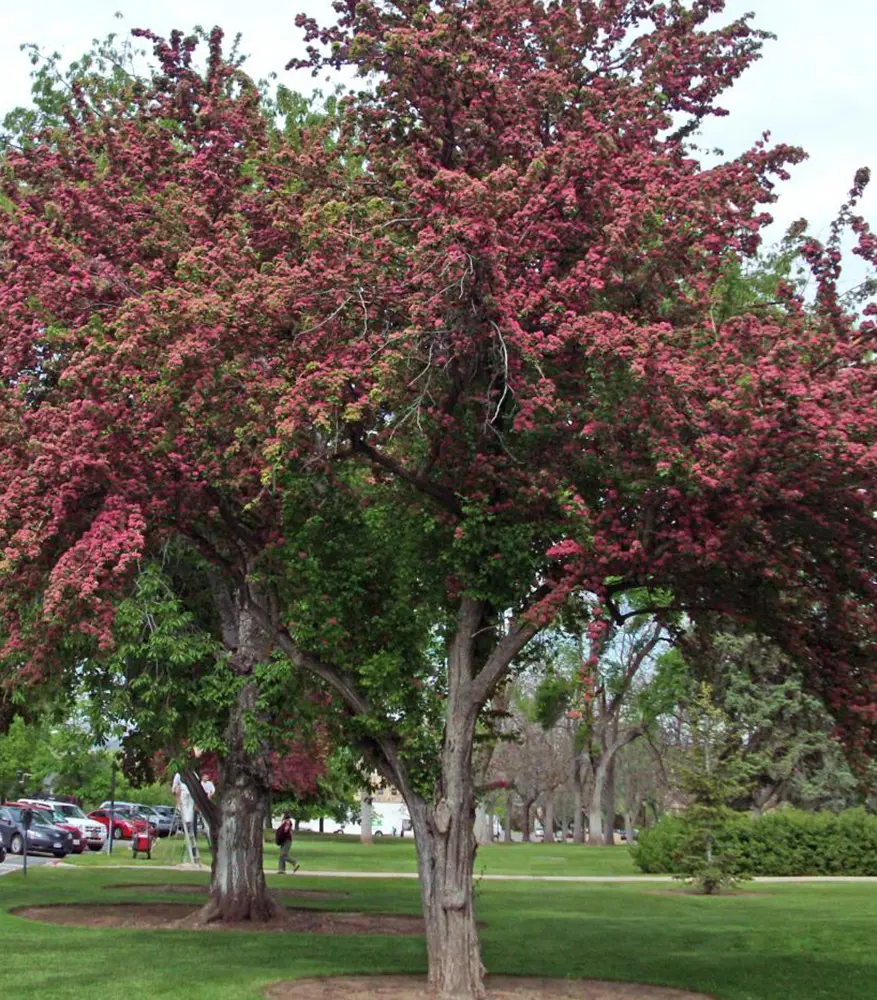
Hawthorn refers to a genus of small to medium-sized deciduous trees and shrubs admired for their ornamental value, spring blooms, and wildlife benefits. These trees are known for their clusters of white or pink flowers that adorn the branches in spring, followed by small, red, or black fruits known as haws in late summer and fall.
Hawthorns are loved by birds and other wildlife for their fruit, making them valuable for creating wildlife-friendly gardens. They prefer full sun to partial shade and well-drained soil, thriving in various climates and soil types.
Beyond their aesthetic appeal, Hawthorns are appreciated for their resilience and low maintenance requirements in landscape settings.
Growing Conditions:
- Sunlight: Full sun to partial shade
- Soil: Well-drained soil
- Water: Moderate watering
16. Amur Maple
Amur Maple is a small, multi-stemmed deciduous tree valued for its stunning fall foliage and compact size, making it ideal for smaller gardens and landscapes. Native to regions of Asia, including China and Mongolia, it features three-lobed leaves that turn fiery shades of red, orange, and yellow in autumn, creating a vibrant display.
Amur Maple produces clusters of small, fragrant white flowers that attract pollinators in spring. It develops in full sun to partial shade and prefers well-drained soil. With its ornamental appeal, drought tolerance, and adaptability, Amur Maple is a popular choice for adding color and interest to urban and residential landscapes alike.
Growing Conditions:
- Sunlight: Full sun to partial shade
- Soil: Well-drained soil
- Water: Moderate watering
17. Tulip Tree
The Tulip Tree is also known as Yellow Poplar or Tulip Poplar. It is a majestic deciduous tree native to eastern North America. It is celebrated for its large, tulip-shaped flowers that bloom in late spring or early summer, featuring yellow-green petals with orange markings.
These striking blooms attract pollinators and add a splash of color to the landscape. Tulip Trees also boast large, bright green leaves that turn golden yellow in the fall, enhancing their ornamental value.
They prefer full sun and well-drained soil but can adapt to various conditions. With its tall stature and impressive blooms, the Tulip Tree is a favored choice for parks, large gardens, and landscapes seeking a dramatic focal point.
Growing Conditions:
- Sunlight: Full sun
- Soil: Well-drained soil
- Water: Regular watering
18. Weeping Willow
The Weeping Willow is an iconic deciduous tree known for its graceful, cascading branches that sweep towards the ground, creating a distinctive weeping appearance. This tree is originally from China.
It has been widely cultivated for its ornamental value and ability to thrive near water bodies such as rivers, ponds, and lakes. Weeping Willows feature slender, lance-shaped leaves that are initially green and turn yellow in the fall before dropping.
They prefer full sun and moist, well-drained soil to flourish. Beyond their aesthetic appeal, these trees provide shade and enhance the tranquil ambiance of gardens and landscapes, making them a popular choice worldwide.
Growing Conditions:
- Sunlight: Full sun to partial shade
- Soil: Moist, well-drained soil
- Water: Requires ample water
19. Sweet Bay Magnolia
Sweet Bay Magnolia is an elegant, evergreen to semi-evergreen ornamental tree native to the southeastern United States. It is prized for its creamy white, fragrant flowers that bloom from late spring to summer, exuding a sweet citrus-like scent.
The flowers contrast beautifully against the tree's glossy green leaves, which have a silvery underside. Sweet Bay Magnolia thrives in full sun to partial shade and prefers moist, well-drained, acidic soil.
It is tolerant of wetter conditions and is often found in lowland areas and near water bodies. Beyond its beauty, Sweet Bay Magnolia attracts pollinators and adds a touch of southern charm to gardens and landscapes.
Growing Conditions:
- Sunlight: Full sun to partial shade
- Soil: Moist, well-drained soil
- Water: Regular watering
20. Black Gum
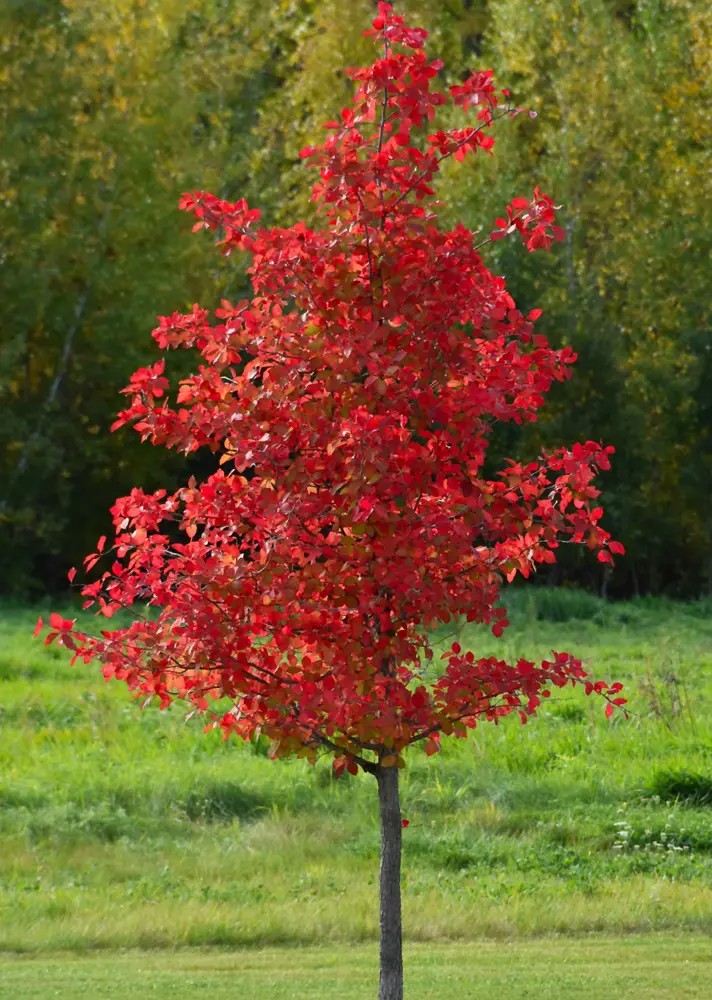
Black Gum is also known as Tupelo. It is a striking deciduous tree native to eastern North America. It is renowned for its brilliant fall foliage, which transitions from vibrant yellow, orange, and red to deep purples and blues. The small, blue-black fruits it produces are a valuable food source for wildlife.
Black Gum trees have a pyramidal to oval-shaped crown and glossy green leaves that turn leathery in texture. They prefer full sun to partial shade and moist, well-drained soil, though they can tolerate wetter conditions. With its ornamental appeal and ecological benefits, Black Gum is favored for urban and woodland landscapes alike.
Growing Conditions:
- Sunlight: Full sun to partial shade
- Soil: Moist, well-drained soil
- Water: Regular watering

